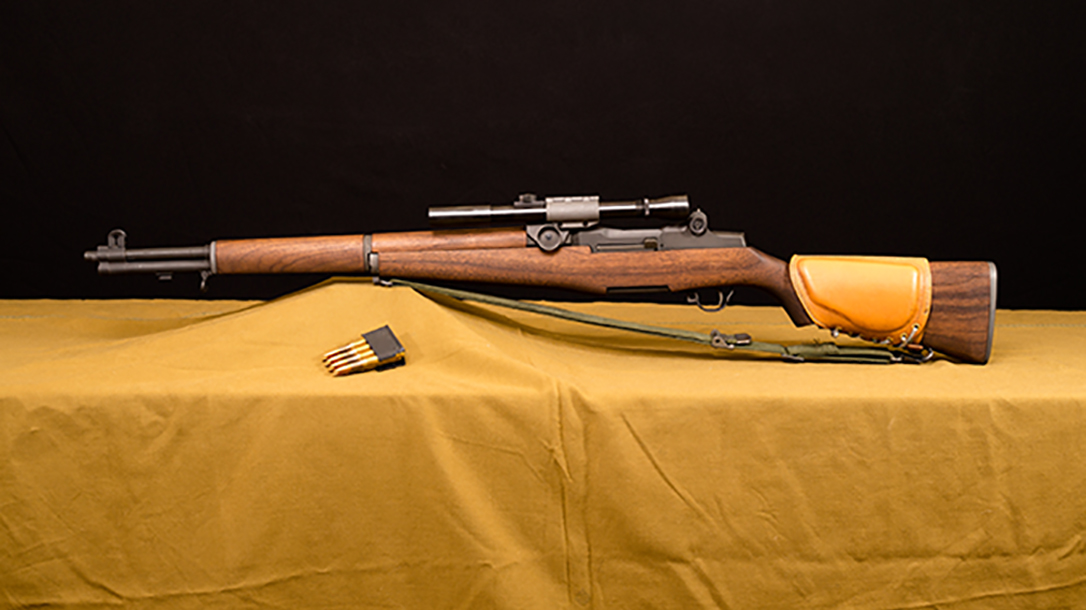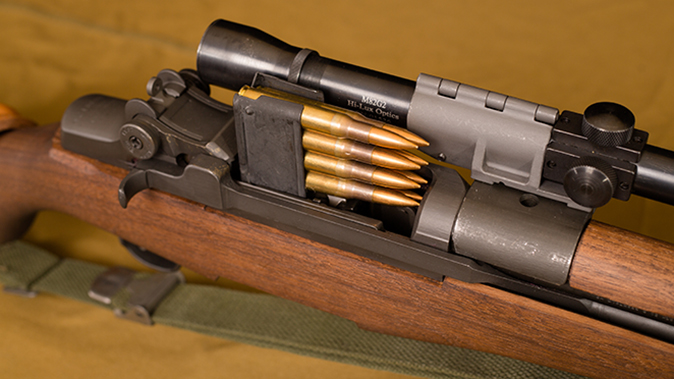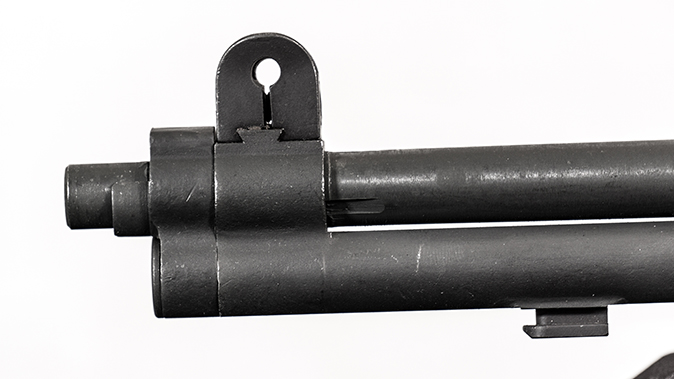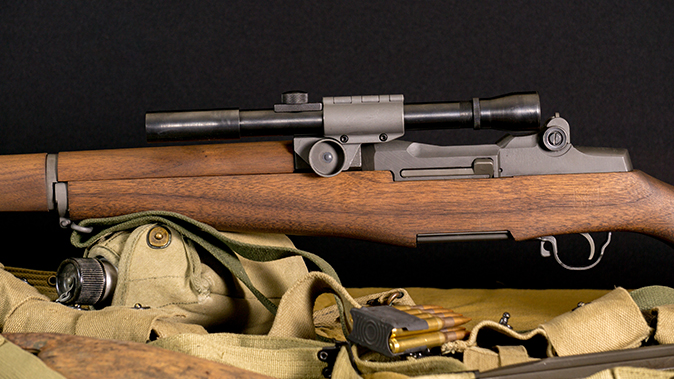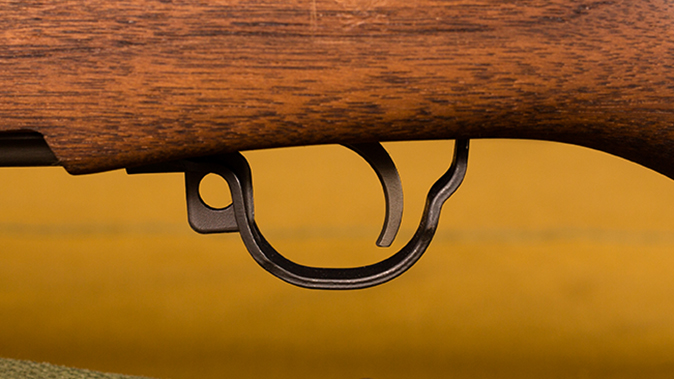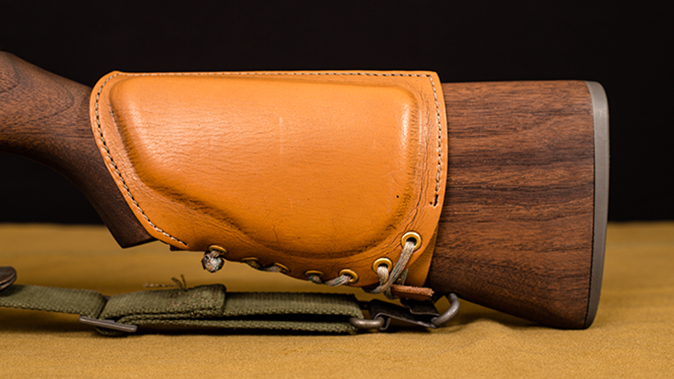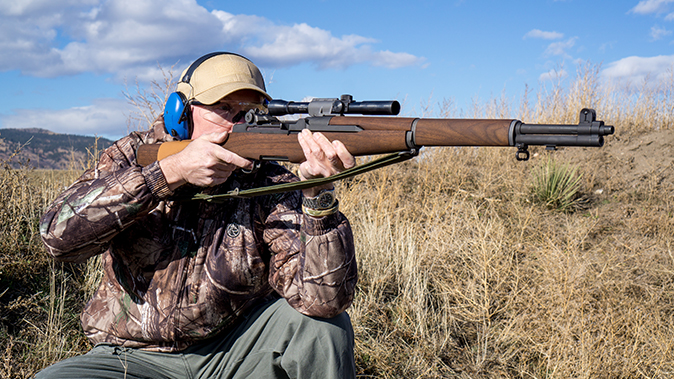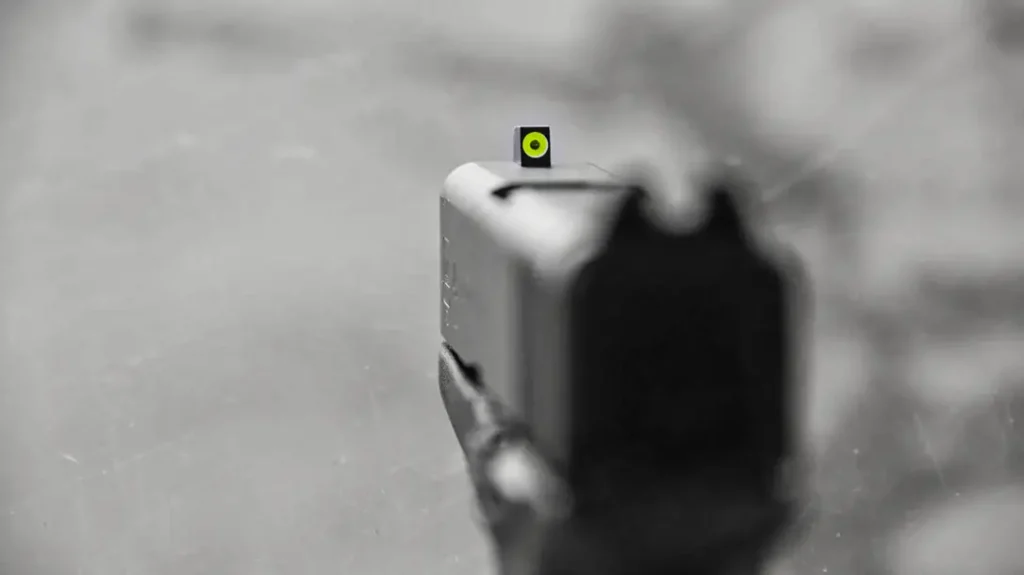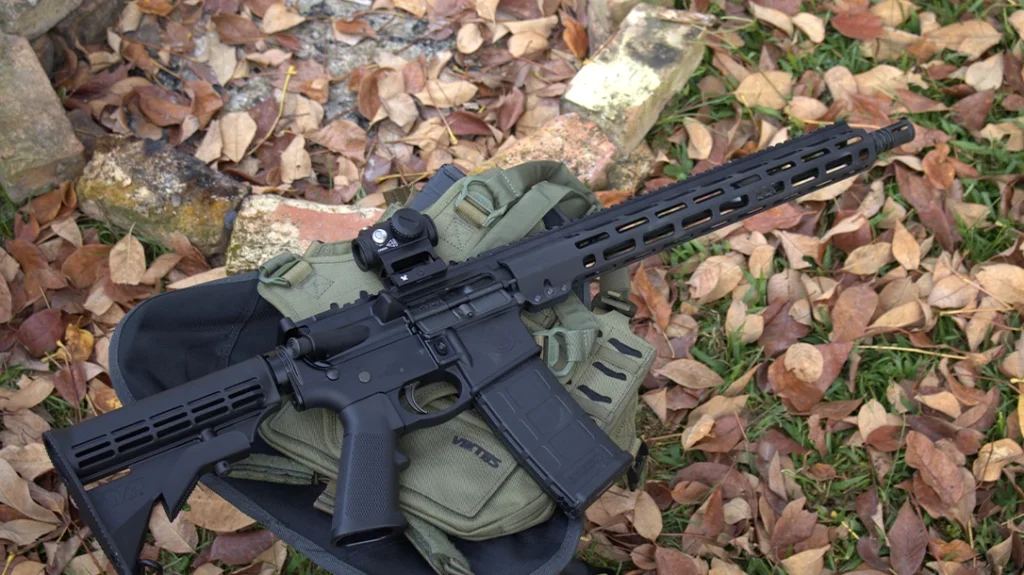World War I was the first conflict in which modern weapons were used in significant numbers by several armies. The tank, heavy machine gun, and fighter and bomber aircraft made their debuts in the trench battles of Western Europe. Russia, France and Germany fielded semi-automatic rifles, but bolt-action rifles like the British 1914, German Mauser ’98, and American 1917 Enfield and M1903 Springfield were the issued weapons of most infantrymen. But in the summer of 1918, the Germans began issuing 35,000 MP18 9mm submachine guns to their troops on all fronts. It quickly became clear to military tacticians that self-loading rifles and pistols were the next major step for the world’s armies.
John C. Garand submitted his first design for a self-loading infantry rifle to the ordnance tests at the Aberdeen Proving Ground in 1920. The design was rejected because it required specialized ammunition. In 1929, he submitted the same design but chambered for the .30-06 Springfield, which was the standard cartridge of the U.S. Army at the time. The rifle was formally accepted in 1936 as the U.S. M1 (Garand) service rifle, and production began in 1937.
Built For Marksmen
The standard infantry Garand was also mildly customized for use as a designated sniper rifle by adding a leather cheekpiece and telescopic scope. The first sniper version was the Garand M1C, and a later model was the M1D. Development of the M1C Garand sniper rifle began in 1943, but only a handful saw combat before the end of World War II. However, the M1C sniper rifle saw plenty of action in the Korean War with U.S. Army and Marine Corps snipers. In the Corps, the gun was designated as the M1952MC. A handful of M1D rifles were built for testing in 1944, but most M1D rifles were manufactured during the Korean War and into the 1960s. The M1D saw combat through most of the Vietnam War and was issued to American and South Vietnamese troops.
Advertisement — Continue Reading Below
The only difference between the M1C and M1D rifles is the design of the scope mount. Unlike the Garand’s successor, the M14, Garand rifles do not load from a detachable box magazine but from an eight-round en bloc clip loaded into the rifle’s action down through the top of the receiver. When the final round is fired, the empty clip is ejected straight up and out of the action along with the spent cartridge case. This means the telescopic sight must be offset to the left atop the receiver to allow clearance for the clip to be ejected cleanly.
Because the scope is offset, your eye must also be offset to see through the scope, so a leather cheekpad was installed on the left side of the walnut buttstock and secured with two brass screws and leather laces.
Advertisement — Continue Reading Below
M1C Garand rifles built at the end of WWII were equipped with the commercial Lyman Alaskan 2.2X fixed-power telescopic sight, which was designated as the M81 or M82. The difference between the scopes was the M81 had a crosshair reticle and the M82 had a vertical tapered-post reticle. Both scope models had rubber eyepieces to block ambient light from the shooter’s eye and position the eye at the correct focal length from the lens. The scope was attached to a bracket, which was then attached to the rifle’s receiver. This involved drilling and tapping holes in the receiver for the mounting screws, which might have weakened the receiver.
The M1D Garand was officially adopted in September of 1944, but most models were built from standard infantry Garands from 1951 through 1953. The M1D incorporated a barrel mount designed by Garand to hold an improved version of the M81 and M82 scopes, called the M84 telescopic sight. The M84 had larger adjustment dials, rubber gaskets to waterproof the scope and flip-open lens caps instead of the screw-on caps, which were often lost. The M81 and M82 crosshair and tapered-post reticules were combined, and the method of mounting the scope was improved. Garand then developed a system in 1944 that used a baseplate fitted over a machined section of the barrel. The plate was staked in place, and a hinged bracket secured the scope to the base. This let the scope be removed from the receiver and reattached—at least theoretically—without having to zero the rifle again.
The three sniper Garand models were also equipped with flash suppressors. The M2 flash suppressor was a truncated-cone design made from sheet metal attached to the muzzle. It was used from 1944 until the mid-1950s, when it was replaced in 1958 by the T37, an open, four-prong design that screwed onto the muzzle in place of the gas cylinder lock. The open-prong flash suppressor was modified in the mid-1960s when it became apparent it could snag on twigs and other foliage (presumably in the jungles of Vietnam), and a small ring was attached to the front to keep the weeds out.
Advertisement — Continue Reading Below
In The Korean War
U.S. Army and Marine Corps snipers in the Korean War received little to no formal training in sniping with the M1C and M1D Garands. Army sniper Chester “Chet” Hamilton (7th Infantry Division) was recruited because he had been a competitive shooter. His first major engagement with Chinese troops let him shoot more than 40 enemy soldiers with his sniper Garand. They were on a ridge above him, silhouetted against the sky. The Marine Corps snipers also learned to perform well. Staff Sgt. John E. Boitnott—possibly the most successful sniper in the Corps in the Korean War—teamed up with Pfc. Henry Friday to kill enemy snipers. Friday walked along a trench line to attract enemy fire, and Boitnott then shot the enemy snipers. Boitnott had nine confirmed kills during two days from 670 to 1,250 yards.
These sniper rifles were eventually retired by the U.S. Army during the late 1950s to early 1960s, after they had been used in combat in WWII, the Korean War and even in the early years of the Vietnam War, where they were fielded by some South Vietnamese Rangers. It was replaced with a similar yet improved design: the M14 service rifle. The M14 featured a 20-round detachable box magazine and was chambered for the 7.62mm NATO/.308 Winchester cartridge, which is almost the ballistic equivalent of the military .30-06. The 7.62mm NATO is just in a shorter cartridge, which made it easier for loading into automatic weapons.
Military-surplus Garands, including the M1C and M1D models, are available for purchase by qualified Americans via the Civilian Marksmanship Program. In an era when composite materials have replaced wood and alloys have replaced some of the steel parts of guns, battle rifles have largely been replaced by true assault rifles in most military armories and by semi-auto copies for civilians. Some might wonder if Garand’s design, now in its 10th decade, is still popular.
Advertisement — Continue Reading Below
Well, it is. Many M1 purists preserve and shoot their Garands in the original military condition in club matches and the national matches at Camp Perry at ranges of 200, 300 and 600 yards.
Zeroing In
My test rifle was an M1D sniper model available from the CMP. As mentioned, the M1D differs only from the M1C in the design of the scope mount and bracket. The M1D has a fixed base on the barrel held in place by a screw and pin. The scope’s removable mount is attached to this base.
When shooting any Garand, it’s important to select the correct type of .30-06 ammunition to avoid bending the operating rod with excessive chamber pressures. Handloaders should only use bullet and powder combinations recommended for the M1. When purchasing factory ammunition, Garand shooters who are not reloaders should stick with surplus military rounds, manufactured decades ago by such American arsenals as Lake City. There are basically two .30-06 loads: M2 and M72 Match .30-caliber FMJs preloaded into the M1 clips.
Advertisement — Continue Reading Below
Federal produces modern factory American Eagle 150-grain FMJ ammunition labeled on the box as,“For M1 Garand use #AE3006M1” with the headstamp “FC 30-M1.” This load produces 2,500 foot-pounds of energy at the muzzle and should not be confused with the hotter “AE3006N” American Eagle load, which produces 2,820 foot-pounds of energy at the muzzle.
Some friends and I shot the M1D and a standard infantry Garand with iron sights for comparison. Both rifles shot the GI-issued M2 ball and Federal Garand ammunition with no failures to feed, fire or eject. Each time, the steel ammo clip ejected correctly after the eighth round was fired. The reproduction M82 2.2X telescopic sight gathered a lot of light and gave a sharp post reticle. It gives a slightly more precise point of aim than the standard iron sights and offers an advantage for target identification and aiming, but not much, even on the clear, sunny day we conducted the live-fire session. The M82 scope is simple to adjust for elevation and windage, and we consistently made shots into head-sized targets, which on the battlefield would get the job done. The rifle was also equipped with the old green-fabric two-point sling, which, when used as a hastily, provided a lot of stability for aiming.
Advertisement — Continue Reading Below
The Garand sniper rifles, although highly effective during the 1940s, did not have the high-quality scopes today’s military and civilian shooters enjoy. Any modification of these fairly rare M1C and M1D rifles would be a crime. However, owners of the standard infantry M1 Garand might consider adding a scope rail to the receiver to use a modern scope. Robar of Phoenix, Arizona, specializes in this and other Garand customizations.
Soldiering On
The M1D illustrates how far modern precision shooting has come in the past 50 years since the old warhorse was retired. The Garand sniper rifles showed that an optical sight on a service rifle was a step up from the front and rear iron sights that originated with muzzleloaders. Today, battle rifles are a thing of the past for most armies. The assault rifle is the infantry’s weapon of choice, along with a low-powered optical battle sight.
M1D Garand Specs
| Caliber: .30-06 Springfield |
| Barrel: 24 inches |
| OA Length: 43.6 inches |
| Weight: 11.81 pounds (empty) |
| Stocks: Walnut |
| Sights: Fixed front blade, fully adjustable rear; M81, M82 or M84 scope |
| Action: Gas-operated semi-auto |
| Finish: Parkerized |
| Capacity: 8 |
| MSRP: $935-$2,000 |
To get your own M1D Garand, make sure you visit thecmp.org.
Advertisement — Continue Reading Below
